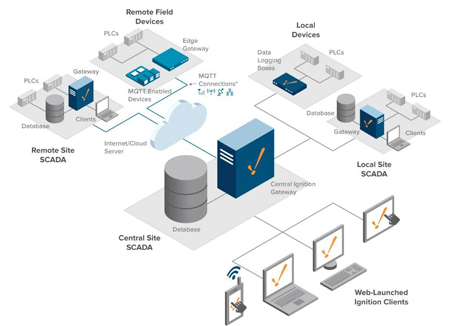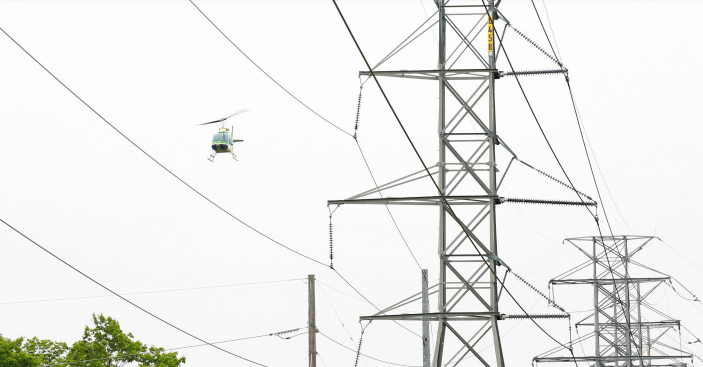What is a Solid State Relay?
By R.W. Hurst, Editor
Substation Relay Protection Training
Our customized live online or in‑person group training can be delivered to your staff at your location.

- Live Online
- 12 hours Instructor-led
- Group Training Available
Download Our OSHA 3875 Fact Sheet – Electrical PPE for Power Industry Workers

- Follow rules for rubber gloves, arc-rated PPE, and inspection procedures
- Learn employer obligations for testing, certification, and training
- Protect workers from arc flash and electrical shock injuries
What is an SSR? SSRs offer a modern, efficient solution for electronic dc switching device applications, with significant benefits in terms of reliability, speed, and silent operation. However, their successful integration into electronic systems requires careful consideration. However, their successful integration into electronic systems requires careful consideration of their characteristics and limitations. By understanding these aspects, engineers and technicians can optimize the performance of SSRs, leveraging their advantages while mitigating their drawbacks.
A solid-state relay is a pivotal component in modern electronic systems, offering an efficient, reliable method for controlling electrical power. These solid-state devices operate on the principle of semiconductor switching, providing an electronic alternative to traditional mechanical relays. This article explores the definition, functionality, benefits, and limitations of SSRs, alongside the technical considerations and performance factors relevant to their application.
The Fundamentals of Solid State Relays
SSRs use semiconductor materials to switch electrical circuits on and off. Unlike electromechanical relays (EMRs) that rely on physical moving parts to create a circuit, SSRs perform this function through electronic means, resulting in a non-contact method of switching.
How SSRs Work
At the heart of a solid state relay is an optical isolation mechanism, typically involving an LED that triggers a semiconductor switch like a thyristor or a triac when activated. This setup ensures that the input voltage and external control signal is electrically isolated from the high-power load circuit. The input signal lights the LED, which then illuminates a photodetector connected to a power semiconductor element that controls the load circuit, thereby completing the switching action.
Electricity Today T&D Magazine Subscribe for FREE

- Timely insights from industry experts
- Practical solutions T&D engineers
- Free access to every issue
Advantages of Solid State Relays
SSRs are favored in many applications due to their significant advantages over mechanical relays:
- Reliability and Durability: With no moving parts, SSRs are less prone to mechanical failure, leading to a longer operational lifespan.
- Speed: SSRs can switch much faster than EMRs, with response times typically in the microseconds to milliseconds range.
- Silent Operation: The absence of mechanical contacts means SSRs operate quietly, an essential feature in noise-sensitive environments.
- Low Power Consumption: SSRs require less energy to operate, as the LED control input consumes minimal power.
- Resistance to Vibration and Shock: Solid-state construction makes SSRs more resistant to physical stress, enhancing their suitability for rugged applications.
Limitations of SSRs
Despite their benefits, SSRs have some drawbacks:
- Heat Generation: SSRs can generate significant heat under high-load conditions, necessitating proper thermal management.
- Limited Load Types: SSRs may not be suitable for all types of loads, especially those that are highly inductive or capacitive.
- Voltage Drop and Leakage Current: SSRs typically have a small voltage drop across the output and may allow a slight leakage current even when off.
Technical Considerations in SSR Application
When incorporating SSRs into electrical systems, several technical factors must be taken into account:
- Load Requirements: The nature of the load (AC or DC, resistive, inductive, or capacitive) influences the selection of SSRs.
- Voltage and Current Ratings: SSRs must be chosen based on their ability to handle the maximum expected voltage and current of the application.
- Thermal Management: Adequate cooling, often in the form of heatsinks or fans, is crucial to prevent overheating and ensure reliable operation.
- Isolation Needs: The level of isolation provided by the SSR must meet the safety and performance standards of the specific application.
Applications of Solid State Relays
SSRs find application in a wide range of industries and control systems due to their versatility and performance advantages. Some of their common applications include:
Industrial Automation: In factory automation systems, SSRs are used for controlling motors, solenoid valves, heating elements, and lighting systems
Building Automation: SSRs play a role in building automation systems for controlling HVAC equipment, lighting systems, and access control systems.
Medical Equipment: Due to their silent operation and ability to handle low currents, SSRs are used in some medical devices for controlling functions like pump operation or lighting.
Power Supplies: Some high-efficiency power supplies utilize SSRs for controlling voltage regulation or output switching.
Test and Measurement Equipment: The fast switching speeds of SSRs make them suitable for applications like data acquisition systems or automated test equipment.
Building Automation: SSRs play a role in building automation systems for controlling HVAC equipment, lighting systems, and access control systems.
Medical Equipment: Due to their silent operation and ability to handle low currents, SSRs are used in some medical devices for controlling functions like pump operation or lighting.
Power Supplies: Some high-efficiency power supplies utilize SSRs for controlling voltage regulation or output switching.
Test and Measurement Equipment: The fast switching speeds of SSRs make them suitable for applications like data acquisition systems or automated test equipment.
Selection Considerations for Solid State Relays
When choosing an SSR for a specific application, several factors need to be considered:
Load Current and Voltage: The SSR's current and voltage ratings must be compatible with the intended load. Exceeding these ratings can damage the SSR.
AC or DC Operation: Depending on the application, select an SSR designed for AC or DC loads. Some SSRs, like those utilizing TRIACs, can handle both.
Control Signal Voltage: Ensure the control voltage of the SSR matches the output voltage of the controlling device (PLC, sensor, etc.).
Form Factor: SSRs come in various package styles, such as through-hole or surface mount for PCB applications, or larger terminal block styles for industrial settings. Choose the form factor that best suits the installation requirements.
Sign Up for Electricity Forum’s Electrical Protection Newsletter
Stay informed with our FREE Electrical Protection Newsletter — get the latest news, breakthrough technologies, and expert insights, delivered straight to your inbox.
Additional Features: Some SSRs offer additional features like zero-cross switching (reduces EMI noise), built-in overload protection, or LED status indicators. Consider these features based on the specific application needs.
What is a Solid State Relay?
SSRs offer a compelling alternative to traditional electromechanical relays. Their faster response times, higher accuracy, and reduced maintenance requirements make them a valuable asset in various control systems. As technology continues to evolve, SSRs are expected to see even wider adoption across various industries, shaping the future of reliable and efficient switching solutions.








